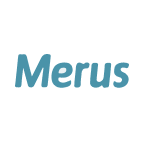
FMP

Merus N.V.
MRUS
NASDAQ
Merus N.V., a clinical-stage immuno-oncology company, engages in the discovery and development of bispecific antibody therapeutics in the Netherlands. Its bispecific antibody candidate pipeline includes Zenocutuzumab (MCLA-128), which is in a phase 2 clinical trials for the treatment of patients with metastatic breast cancer, as well as in Phase 1/2 clinical trials for the treatment of solid tumors that harbor Neuregulin 1. The company is also developing MCLA-158, which is in a phase I clinical trial for the treatment of solid tumors; MCLA-145, which is in phase 1 clinical trials for the treatment of solid tumors; MCLA-129, which is in phase 1/2 clinical trials for the treatment of patients with advanced non-small cell lung cancer and other solid tumors; and ONO-4685 that is Phase 1 clinical trial to treat relapsed/refractory T cell lymphoma. In addition, it has collaboration agreement with Betta Pharmaceuticals Co. Ltd for the research and development of stage bispecific antibody candidates include MCLA-129; and collaboration with Incyte Corporation for the development of MCLA-145. The company was incorporated in 2003 and is headquartered in Utrecht, the Netherlands.
42.21 USD
0.155 (0.367%)
